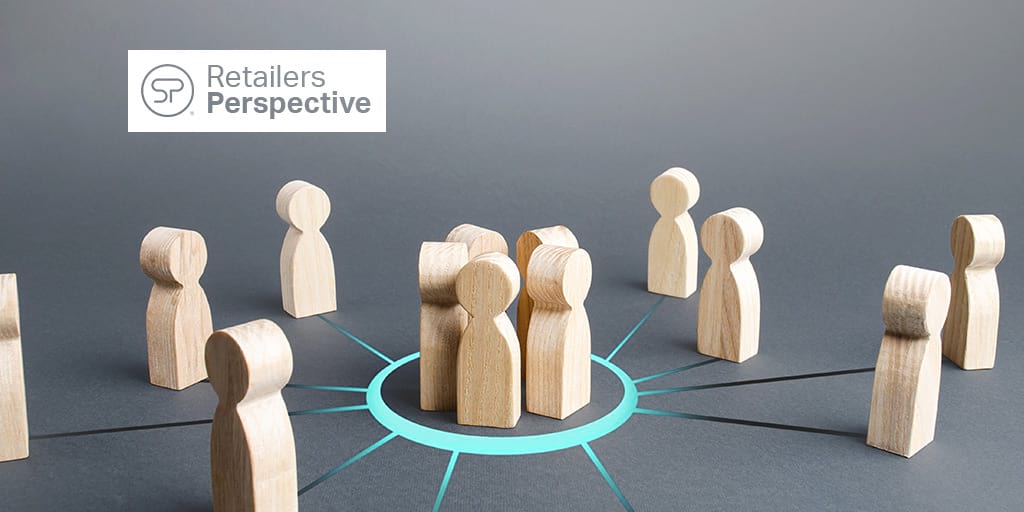"Effective teamwork begins and ends with communication." Duke University Men's Basketball Head Coach Mike Krzyzewski knows a thing or two about communication and its impact on success. Krzyzewski has led his teams to five NCAA National Championship wins and three Olympic Gold Medals. His quote applies to more than just sports. Retail managers can -- and need to -- embrace strong communication practices. Communication between management and staff can make or break how successful a store operates.
In retail, employees play a multitude of important roles. They're salespeople, customer service reps, and inventory managers. They are the tip of the spear and customers will judge a store based on its frontline staff. Creating a consistent, cohesive communication plan empowers retail employees and enables them to be more productive.
Effective retail communication can:
- Minimize Misunderstandings
- Create a more robust working environment
- Generate a better customer experience
Measuring Retail Training ROI and Engagement
1) Minimizing Misunderstandings
It is easy for communication breakdowns to occur in the retail environment. Staff generally work without desks or dedicated computers and continually move throughout stores. It is often difficult for them to catch managers to ask questions or sift through corporate and vendor emails about products. Ill-informed employees reflect the retailer at the customer level, impacting a store's bottom line. Miscommunication about current promotions, new products, and new policies means employees will fail to follow-through on the investment made in those things.
Misunderstandings can create problems that go beyond a simple price disagreement at the register. According to Trade Press Services, 74% of employees feel like they're missing out on company information and news. Not knowing what is going on leads to disengaged and frustrated employees who are more likely to quit. High turnover and disengaged employee rates plague the retail industry. Retailers need to motivate and retain staff with solid customer service skills, as customers spend a whopping 140% more after positive in-store experiences. Avoiding misunderstandings is important.
2. Creating a Robust Working Environment
As noted, retail employees are usually out working sales floors by helping customers, restocking inventory, or generally doing things that require them to be on the move. While some store break rooms have whiteboards with updated sales tactics or campaign dates, employees often miss these messages. Mobile communication, however, is a direct way to connect with employees.
Adopting a BYOD policy (bring your own device) allows retailers to make use of the engagement platform employees are already walking around with in their pockets. Automated push notifications, real-time forums, gamified training, and other mobile communication tactics allow retailers to keep employees updated on products, promotions, and company information. Retailers are increasingly taking advantage of the potential to communicate, train, and motivate retail employees through their phones.
Ultimate Guide to Training Retail Employees
3. Generating Better Customer Experiences
"The customer is always right," or so the old saying goes. Although customers are often quite wrong, retailers know the true sentiment here is to ensure customers always feel valued, heard, and cared for by retail employees. Great customer experiences create loyalty, and loyal customers are five times more likely to purchase from a retail store again -- and four times more likely to refer a friend.
Winning customer experiences also encourage people to keep visiting your store. In our post Touch Me: Creating Retail Experiences that will Always Beat Online Shopping, we looked at ways stores can improve customer experiences to combat the consumer shift to online shopping, which has really taken off since the pandemic. Instead of looking at retail employees as just that -- employees -- think of them as so much more. They are your ambassadors. They are the first thing a customer sees and interacts with. Savvy staff, whether it be about products, company/store history, or current campaigns, help create better experiences for all involved. The customer walks away happy with the purchase and experience, while the employee feels empowered reaching goals and knowing they made a difference.
Fortunately, retailers have access to incredible tools to help them communicate better with retail employees. The SellPro platform uses engagement techniques and rewards that inspire employees to learn and stay updated through original games, concise retailer and vendor-driven training, and more—all from their mobile phones. Communication and trainings are brief, fun, and can be consumed while working on the sales floor. See below to learn more!
Additional Resources:
Post-Lockdown Game Plan: Bringing Retail Employees Back to Work
Gamification Tips for Better Retail Employee Engagement
Training Millennial & Gen Z Staff to be Retail Store Advocates


